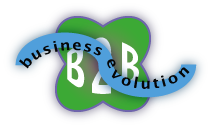 Thanks for being one of the first visitors to Social Business Services, which launched on 3 February 2012. The site has many moving parts, so please let us know by commenting on any page or post if something seems awry; we are still in the process of final tweaking and testing. Thanks for being one of the first visitors to Social Business Services, which launched on 3 February 2012. The site has many moving parts, so please let us know by commenting on any page or post if something seems awry; we are still in the process of final tweaking and testing.
Social Business Services aims to be your front row seat to the disruption and transformation of B2B sales and marketing as well as other functions like client/customer service, human resources, product development and IT. B2B clients will change your business because they are finding and educating each other very quickly. This creates fantastic opportunity for the firms that understand and react.
Thanks for visiting!
B2B Customers Getting Social Fast: How Marketing and Sales Can Evolve explains how clients/customers are smarter and want a new kind of relationship | The new economics of business reputation
 While preparing to launch Social Business Services for B2B Sales in January 2012, I have been engaged in its Ecosystem Audit. I have plumbed online conversations about B2B Sales and Marketing adoption of social business (erstwhile social media). I have been struck by a recurring realization: a large part of Marketing and Sales as we know them is significantly out of alignment with B2B customers. Social business is permeating customer networks throughout the economy and changing customer behavior and expectations. This has created a rare opportunity for B2B marketing and sales people who understand and respond ahead of the market. If I’m right, this could be one of the most important posts you read this year. While preparing to launch Social Business Services for B2B Sales in January 2012, I have been engaged in its Ecosystem Audit. I have plumbed online conversations about B2B Sales and Marketing adoption of social business (erstwhile social media). I have been struck by a recurring realization: a large part of Marketing and Sales as we know them is significantly out of alignment with B2B customers. Social business is permeating customer networks throughout the economy and changing customer behavior and expectations. This has created a rare opportunity for B2B marketing and sales people who understand and respond ahead of the market. If I’m right, this could be one of the most important posts you read this year.
Two quick examples of misalignment: one of Marketing’s underlying assumptions is that it is not economically feasible to have large-scale one-on-one customer conversations, so marketing must […]
Using Social Networks for Recruiting and Sales shows how firms can increase quality of recruits and sales leads while cutting costs.
 Social networks can help organizations, whether commercial, nonprofit or government, to significantly improve their efficiency in business processes like recruiting, sales and service. This is what we call “Enterprise Process Innovation” because, by using social networks to create and nurture relationships with alumni, your employees can diminish the time required to accomplish tasks within these processes. It’s well known that most alumni, former employees, move to firms that are related to your business (adjacent in the value chain) or complementary in some way. Yes, some move to competitors, but they are usually in the minority. Social networks, by significantly reducing the cost of having relevant, quality conversations, make robust employee-alumni networks actionable as never before. Social networks can help organizations, whether commercial, nonprofit or government, to significantly improve their efficiency in business processes like recruiting, sales and service. This is what we call “Enterprise Process Innovation” because, by using social networks to create and nurture relationships with alumni, your employees can diminish the time required to accomplish tasks within these processes. It’s well known that most alumni, former employees, move to firms that are related to your business (adjacent in the value chain) or complementary in some way. Yes, some move to competitors, but they are usually in the minority. Social networks, by significantly reducing the cost of having relevant, quality conversations, make robust employee-alumni networks actionable as never before.
All organizations (I’ll use “firm” to denote for profit, government and nonprofit) have business processes that benefit from relevant insight and introductions from other people: insight about the situation of the prospect, where the best sources of new […]
Why Google Plus Should Be on Executives’ Radar explains Google’s new social network and why it commands attention; it changes the context of social networks.

The launch of Google’s new social network has poignant significance for executives—in predictable and surprising ways. Google+ is exceptionally significant because it is an exciting new social venue with the potential to disrupt, but even more important, it can teach us about how the ecosystem works and how organizations can learn to use it to garner support for things they care about. Here I’ll outline my first impressions and give general guidance for executives to take advantage of Google+’s potential.
[…]
Must read post speculating on whether Google will integrate Google+ with Docs to make an enterprise play, disrupting Yammer, Socialtext and other lightweight social enterprise players. This is exactly how to think and why most people miss the true significance of Google+: it’s a social infrastructure into which users will be able to plug many of their other Web activities (such as using Google Docs, Gmail, Payments, etc.). This makes it far more significant that "another social network." Thx @jowyang #fb […]
 “Social media monitoring” is one of the trappings of social business, and most organizations are bewildered by the various approaches they could use to “listen to the ecosystem.” No one argues that a key part of social business governance is determining meaningful metrics to measure the impact of interacting in social venues, but how you use metrics to listen and measure is far from obvious, so here I’ll share some insights I’ve developed based on helping clients through the process of selecting a “listening solution” as well as the process that we have used. Based on these experiences, I have developed an offering by templating the processes, but I won’t go into detail about that here. “Social media monitoring” is one of the trappings of social business, and most organizations are bewildered by the various approaches they could use to “listen to the ecosystem.” No one argues that a key part of social business governance is determining meaningful metrics to measure the impact of interacting in social venues, but how you use metrics to listen and measure is far from obvious, so here I’ll share some insights I’ve developed based on helping clients through the process of selecting a “listening solution” as well as the process that we have used. Based on these experiences, I have developed an offering by templating the processes, but I won’t go into detail about that here.
[…]
 Giving as Smart Business: Blake Mycoskie, Founder TOMS Shoes is a fantastic story and a smart business idea. Blake Mycoskie is a gifted storyteller in his own right, and, in this South by Southwest 2011 keynote, he entertained the audience with the story of TOMS Shoes while imparting a simple but profound principle of 21st century business: discovering the meaning and potential of giving. Here are the highlights of TOMS story, which will help you appreciate the context of the blockbuster business idea. Giving as Smart Business: Blake Mycoskie, Founder TOMS Shoes is a fantastic story and a smart business idea. Blake Mycoskie is a gifted storyteller in his own right, and, in this South by Southwest 2011 keynote, he entertained the audience with the story of TOMS Shoes while imparting a simple but profound principle of 21st century business: discovering the meaning and potential of giving. Here are the highlights of TOMS story, which will help you appreciate the context of the blockbuster business idea.
[…]
Executive’s Guide to Social Networks Consolidates Several Top10 Blogs, Prepares Expansion
 CSRA, the Creator of the Executive’s Guide to LinkedIn, the Executive’s Guide to Twitter & Blogging and the Executive’s Guide to Facebook, beta-launched the Executive’s Guide to Social Networks today to provide social media managers and individual executives a powerful new resource for practical insights into social business, which uses social technologies to transform business processes. CSRA, the Creator of the Executive’s Guide to LinkedIn, the Executive’s Guide to Twitter & Blogging and the Executive’s Guide to Facebook, beta-launched the Executive’s Guide to Social Networks today to provide social media managers and individual executives a powerful new resource for practical insights into social business, which uses social technologies to transform business processes.
From its inception in 2008, the Executive’s Guide offered leaders a value proposition that is still unique in the market today. The guides help executives boost their individual competitiveness using social networks while they also address how to use social networking platforms to change business.
[…]
 2011 Social Business Predictions and Recommendations describes current social business adoption and advices firms and people how to get ahead. 2011 Social Business Predictions and Recommendations describes current social business adoption and advices firms and people how to get ahead.
2011 will be remembered as the year “social media” fell by the wayside, strategy became a recognized prerequisite for serious efforts, and “social business” began displacing it in boardrooms’ mindshare. “Social media,” which usually tries to use social technologies to talk at people, has been the predominant “first use” of socialtech because marketing drives most social initiatives, and marketers “communicate,” i.e. push content, to their targets. When they “listen,” they use limited legacy processes such as focus groups, email marketing, data mining and online surveys. However, none of these scratch the real itch because they emphasize the company asking individuals structured questions; they don’t allow customer to customer interaction, which is ten times more illuminating because it is spontaneous and customer-centric.
Socialtech gets there, but marketers are ambivalent about it because it means a loss of control. And more profits and career growth for marketers, but they have to let go first. It’s a leap of faith, but […]
 In Five Tips for Smarter Social Networking in their Big Shift Harvard Business Review blog, John Hagel III and John Seely Brown offer solid advice for executives who want to get traction with social networks, some of which might surprise you. It’s valuable for executives from individual and company perspectives. Here’s the post, and here’s my response, which builds and extends some of their points: In Five Tips for Smarter Social Networking in their Big Shift Harvard Business Review blog, John Hagel III and John Seely Brown offer solid advice for executives who want to get traction with social networks, some of which might surprise you. It’s valuable for executives from individual and company perspectives. Here’s the post, and here’s my response, which builds and extends some of their points:
John2, thanks for very solid advice all around. However, I totally agree with @cole, to be most productive as an individual or an enterprise, you must have an explicit strategy. An enterprise is an orchestra, so defining key goals and techniques, without dictating, is critical for success. This includes giving guidance and space for employees to pursue their personal branding, by resonating with the enterprise.
[…]
|
|
![]() Thanks for being one of the first visitors to Social Business Services, which launched on 3 February 2012. The site has many moving parts, so please let us know by commenting on any page or post if something seems awry; we are still in the process of final tweaking and testing.
Thanks for being one of the first visitors to Social Business Services, which launched on 3 February 2012. The site has many moving parts, so please let us know by commenting on any page or post if something seems awry; we are still in the process of final tweaking and testing.
 While preparing to launch Social Business Services for B2B Sales in January 2012, I have been engaged in its Ecosystem Audit. I have plumbed online conversations about B2B Sales and Marketing adoption of social business (erstwhile social media). I have been struck by a recurring realization: a large part of Marketing and Sales as we know them is significantly out of alignment with B2B customers. Social business is permeating customer networks throughout the economy and changing customer behavior and expectations. This has created a rare opportunity for B2B marketing and sales people who understand and respond ahead of the market. If I’m right, this could be one of the most important posts you read this year.
While preparing to launch Social Business Services for B2B Sales in January 2012, I have been engaged in its Ecosystem Audit. I have plumbed online conversations about B2B Sales and Marketing adoption of social business (erstwhile social media). I have been struck by a recurring realization: a large part of Marketing and Sales as we know them is significantly out of alignment with B2B customers. Social business is permeating customer networks throughout the economy and changing customer behavior and expectations. This has created a rare opportunity for B2B marketing and sales people who understand and respond ahead of the market. If I’m right, this could be one of the most important posts you read this year. Social networks can help organizations, whether commercial, nonprofit or government, to significantly improve their efficiency in business processes like recruiting, sales and service. This is what we call “Enterprise Process Innovation” because, by using social networks to create and nurture relationships with alumni, your employees can diminish the time required to accomplish tasks within these processes. It’s well known that most alumni, former employees, move to firms that are related to your business (adjacent in the value chain) or complementary in some way. Yes, some move to competitors, but they are usually in the minority. Social networks, by significantly reducing the cost of having relevant, quality conversations, make robust employee-alumni networks actionable as never before.
Social networks can help organizations, whether commercial, nonprofit or government, to significantly improve their efficiency in business processes like recruiting, sales and service. This is what we call “Enterprise Process Innovation” because, by using social networks to create and nurture relationships with alumni, your employees can diminish the time required to accomplish tasks within these processes. It’s well known that most alumni, former employees, move to firms that are related to your business (adjacent in the value chain) or complementary in some way. Yes, some move to competitors, but they are usually in the minority. Social networks, by significantly reducing the cost of having relevant, quality conversations, make robust employee-alumni networks actionable as never before.
 “Social media monitoring” is one of the trappings of social business, and most organizations are bewildered by the various approaches they could use to “listen to the ecosystem.” No one argues that a key part of social business governance is determining meaningful metrics to measure the impact of interacting in social venues, but how you use metrics to listen and measure is far from obvious, so here I’ll share some insights I’ve developed based on helping clients through the process of selecting a “listening solution” as well as the process that we have used. Based on these experiences, I have developed an offering by templating the processes, but I won’t go into detail about that here.
“Social media monitoring” is one of the trappings of social business, and most organizations are bewildered by the various approaches they could use to “listen to the ecosystem.” No one argues that a key part of social business governance is determining meaningful metrics to measure the impact of interacting in social venues, but how you use metrics to listen and measure is far from obvious, so here I’ll share some insights I’ve developed based on helping clients through the process of selecting a “listening solution” as well as the process that we have used. Based on these experiences, I have developed an offering by templating the processes, but I won’t go into detail about that here. Giving as Smart Business: Blake Mycoskie, Founder TOMS Shoes is a fantastic story and a smart business idea. Blake Mycoskie is a gifted storyteller in his own right, and, in this South by Southwest 2011 keynote, he entertained the audience with the story of TOMS Shoes while imparting a simple but profound principle of 21st century business: discovering the meaning and potential of giving. Here are the highlights of TOMS story, which will help you appreciate the context of the blockbuster business idea.
Giving as Smart Business: Blake Mycoskie, Founder TOMS Shoes is a fantastic story and a smart business idea. Blake Mycoskie is a gifted storyteller in his own right, and, in this South by Southwest 2011 keynote, he entertained the audience with the story of TOMS Shoes while imparting a simple but profound principle of 21st century business: discovering the meaning and potential of giving. Here are the highlights of TOMS story, which will help you appreciate the context of the blockbuster business idea. CSRA, the Creator of the Executive’s Guide to LinkedIn, the Executive’s Guide to Twitter & Blogging and the Executive’s Guide to Facebook, beta-launched the Executive’s Guide to Social Networks today to provide social media managers and individual executives a powerful new resource for practical insights into social business, which uses social technologies to transform business processes.
CSRA, the Creator of the Executive’s Guide to LinkedIn, the Executive’s Guide to Twitter & Blogging and the Executive’s Guide to Facebook, beta-launched the Executive’s Guide to Social Networks today to provide social media managers and individual executives a powerful new resource for practical insights into social business, which uses social technologies to transform business processes. 2011 Social Business Predictions and Recommendations describes current social business adoption and advices firms and people how to get ahead.
2011 Social Business Predictions and Recommendations describes current social business adoption and advices firms and people how to get ahead. In Five Tips for Smarter Social Networking in their Big Shift Harvard Business Review blog, John Hagel III and John Seely Brown offer solid advice for executives who want to get traction with social networks, some of which might surprise you. It’s valuable for executives from individual and company perspectives. Here’s the post, and here’s my response, which builds and extends some of their points:
In Five Tips for Smarter Social Networking in their Big Shift Harvard Business Review blog, John Hagel III and John Seely Brown offer solid advice for executives who want to get traction with social networks, some of which might surprise you. It’s valuable for executives from individual and company perspectives. Here’s the post, and here’s my response, which builds and extends some of their points: